|
Visit to the Boardman Wind Tunnel - December 2018
From the moment I learned that Boardman bikes were planning to open a facility offering wind-tunnel aerodynamic testing to the masses, this day was inevitable.
Chris Boardman is, without equal, my cycling hero; his career highs at the Barcelona Olympics, on the roads of France, and in the velodrome coincided with my early exposure to the sport (albeit just as a spectator). In fairness, Chris is pretty high up on the list of humans I admire and respect - his logical, evidence-based approach to life strikes a chord with my own empirical outlook. OK - I'm a bit of a fan-boy; my bike collection is littered with a variety of examples bearing the Boardman name. I probably would have made the journey to Evesham even if I wasn't especially interested in cycling aerodynamics, and the optimisation of my position and equipment. But I am.
I have made a fairly concerted effort over the years to measure and improve my aerodynamic efficiency. I spent some time understanding the maths, and exploring the field testing methodology, as well as harvesting data. It became something of a hobby for a while - and it delivered some worthwhile results (see this post). In fact at one point I even considered the option of trying to offer my services to others via a website I created: www.bikeaerodata.com (as it happens, I soon figured out it wasn't going to be much of a money spinner so just published my home calculator page for anyone to use).
With all this in mind I approached the day with the acceptance that there might not be a big gain waiting to find. I was happy with this scenario - if I could validate the position I already had, then I'd view that as a success. If it transpired there was something I could be doing differently, to unlock some free speed, then of course that would be great. Secretly though, I was kind of hoping that I was more or less spot on. Either way I couldn't really lose :).
So, with much excitement, a session was booked at the first available opportunity for myself and two other aero-data enthusiasts.
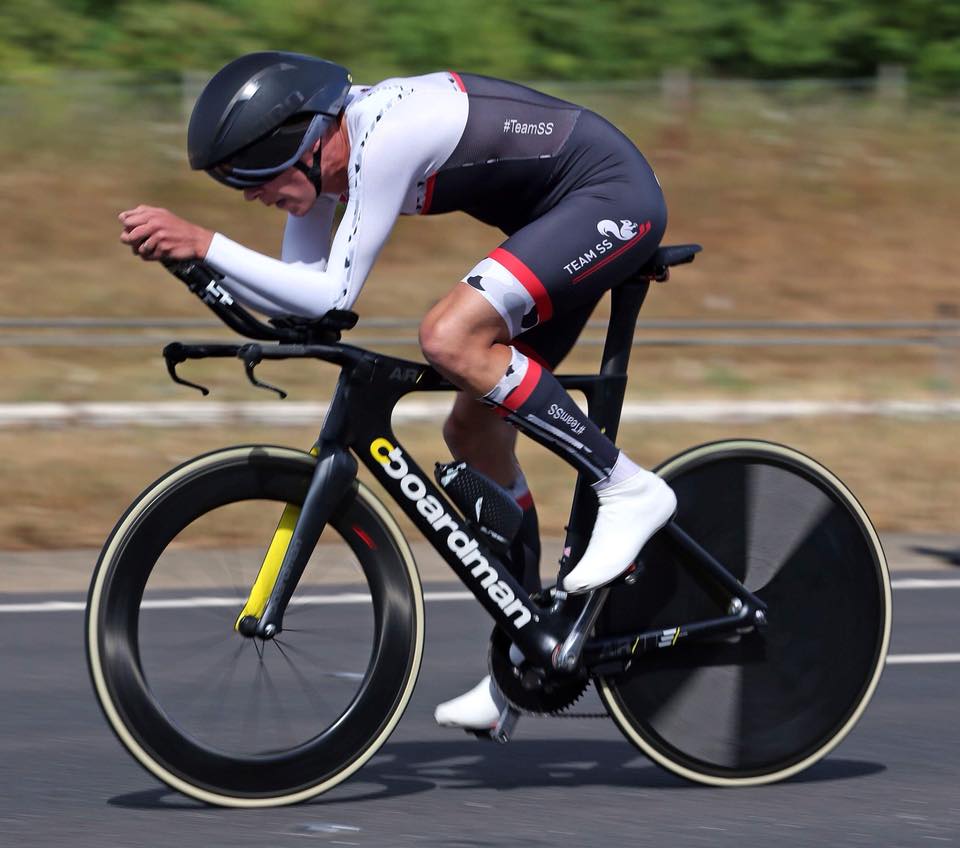
My 2018 position
We arrived and were greeted by the Boardman team. Despite not having been open for long, the whole operation is already very slick and the expertise and enthusiasm of the centre staff is immediately apparent. We were going to be working with Jamie Pringle - one of leading experts in this field, and an authentic secret squirrel. One of my friends was first up, and it gave me a great opportunity to observe the process and ask questions that would help with my own session. His bike was quickly mounted and we were soon collecting data.
The wind tunnel is housed in a giant shed full of warm air. The bike is firmly mounted in a frame on a floating deck, that is connected to a collection of sensitive scales and strain gauges. A fan behind the rider draws this air through the tunnel at a known velocity. Then by gathering the data from the deck, the rider's CdA can be calculated and compared in different riding positions and with different equipment. A variety of cameras and a heads-up display complete the setup. Whilst the tunnel can provide almost real-time readings, data are recorded in a series of one minute 'runs' to allow averaging to improve the repeatability.

The protocol for each of us was to collect a baseline CdA reading, then make small incremental adjustments to determine if any advantage could be found. The basic premise with such testing is to change just one element at a time in order to determine the magnitude of any difference. That said, it also proved valuable to look at the potential combined effect of multiple adjustments to see whether they provided a cumulative effect or were perhaps interchangeable. For example, a rider either tucking their head, or shrugging their shoulders might reduce the CdA, but both tucking and shrugging simultaneously might not provide 'double' the advantage.
Once my testing started I was content to see my baseline CdA in the 'excellent' to 'exceptional' range, and even more pleased to see the numbers very close to my own field calculated estimates. We then set about trying to amend my front-end position. Holding a shoulder shrug gave only a negligible saving, and was uncomfortable anyway. Shortening my position gave a dramatic decrease in efficiency. Raising / lowering my hand height and lifting my elbows all achieved nothing significant. We did, however, find a thin seam of gold by narrowing my elbow position just a few centimeters. Not much, but worth having.

Next up, we tested a variety of different helmets. This was particularly fruitful, as we immediately discovered a meaningful advantage in exchanging my current size-L Giro Aerohead for a size-M (which fits me just as well). Added to this, it is a well known fact that a bit of well placed electrical tape on this particular helmet is worth another few watts. A couple of other helmets also returned similar, or marginally greater, gains - whether these are worth the outlay at this point I am still undecided. I was however relieved to see my data for the £400+ Endura helmet rule out this particular purchase.

With some time spare, I took the opportunity to establish the answer to a question that has been bugging me for a while - whether to ride with my aero bottle fitted or not? The answer was definitive. I guess you'll have to wait and see my setup on a start line somewhere in 2019 to find out!
To wrap up my session we did one final run, with the kit that had tested best and in what we considered the optimum position (note the narrow elbow placement). The overall cumulative gain over the baseline was actually quite impressive. 18W saved in total. Equivalent to as much as 51secs over a 25mile TT.
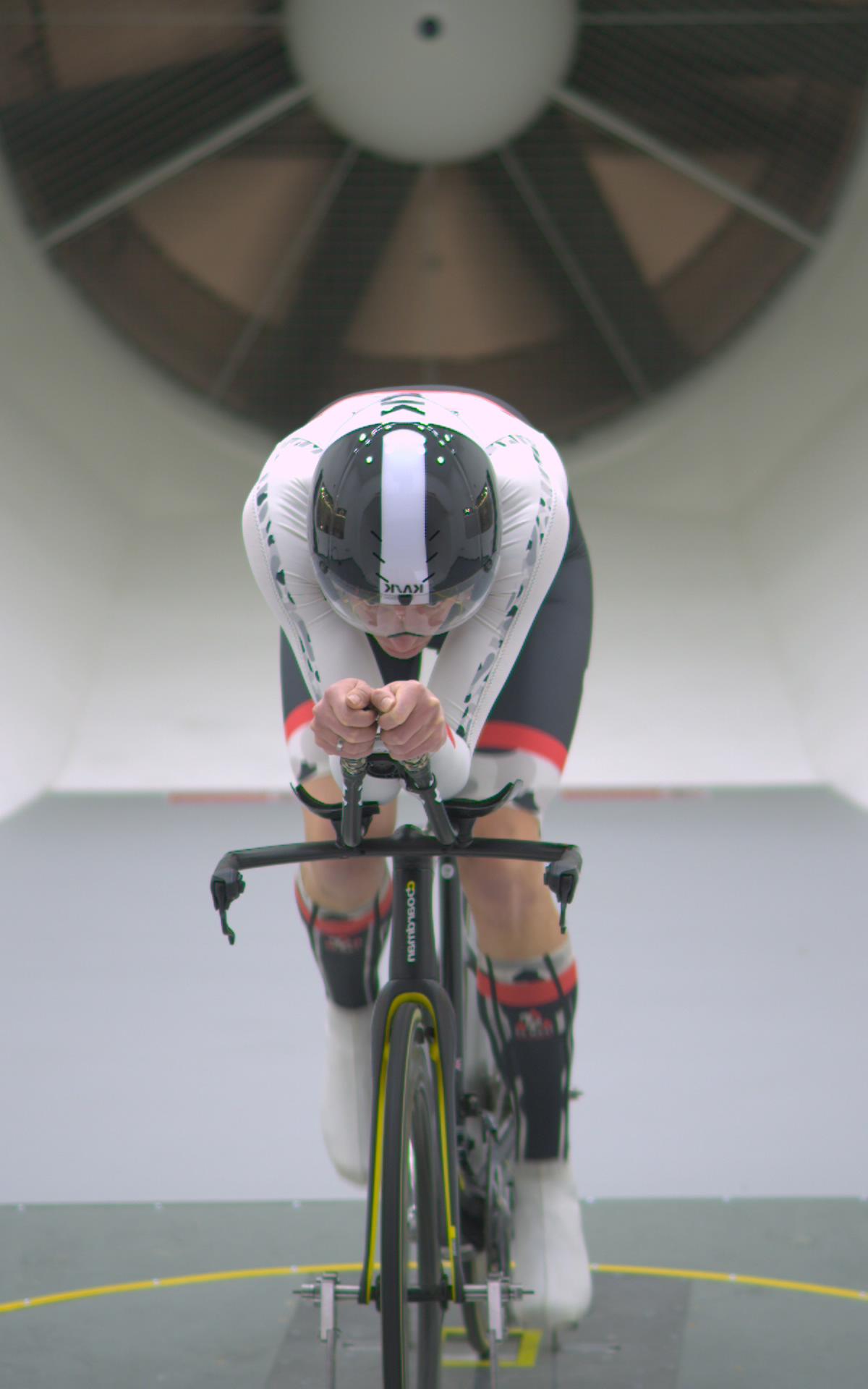
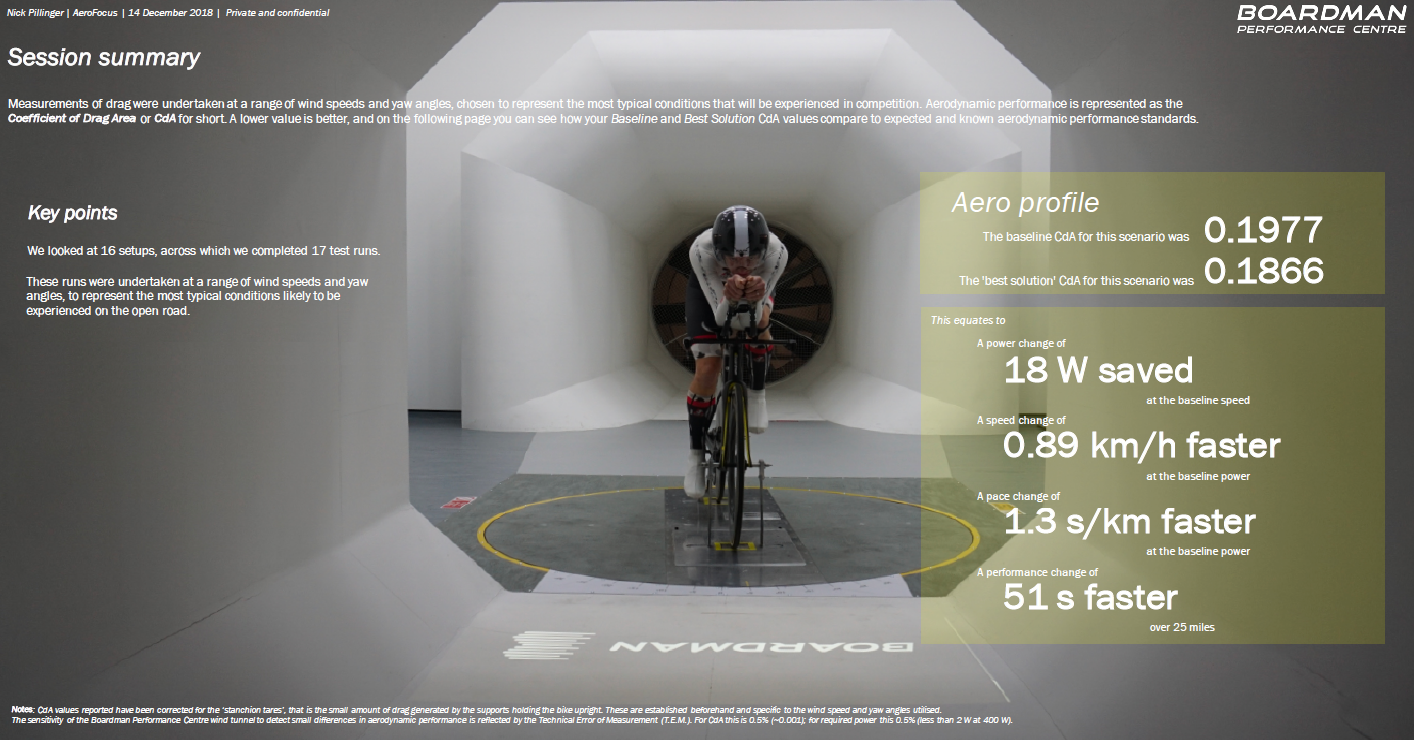
As winter continues, and I'm back to beavering away in the garage, my turbo bike has been honed to accommodate these changes. There's plenty of time for the body to adapt, and plenty of time to consider the helmet options for the year ahead.
All in all it was a brilliant learning experience for any amateur aero devotee, and a fabulous facility for anyone with a passion for cycling. The session cost is not insignificant, but little compared to what I might have otherwise invested in a new piece of kit, purely on the basis of some dubious marketing data. Instead I have came away with a lot more knowledge, some verifiable data, and more than a handful of spare watts to play with (oh, and just one more Boardman frame for my collection!).
Thank you Jamie and the staff at Boardman for a great day out.
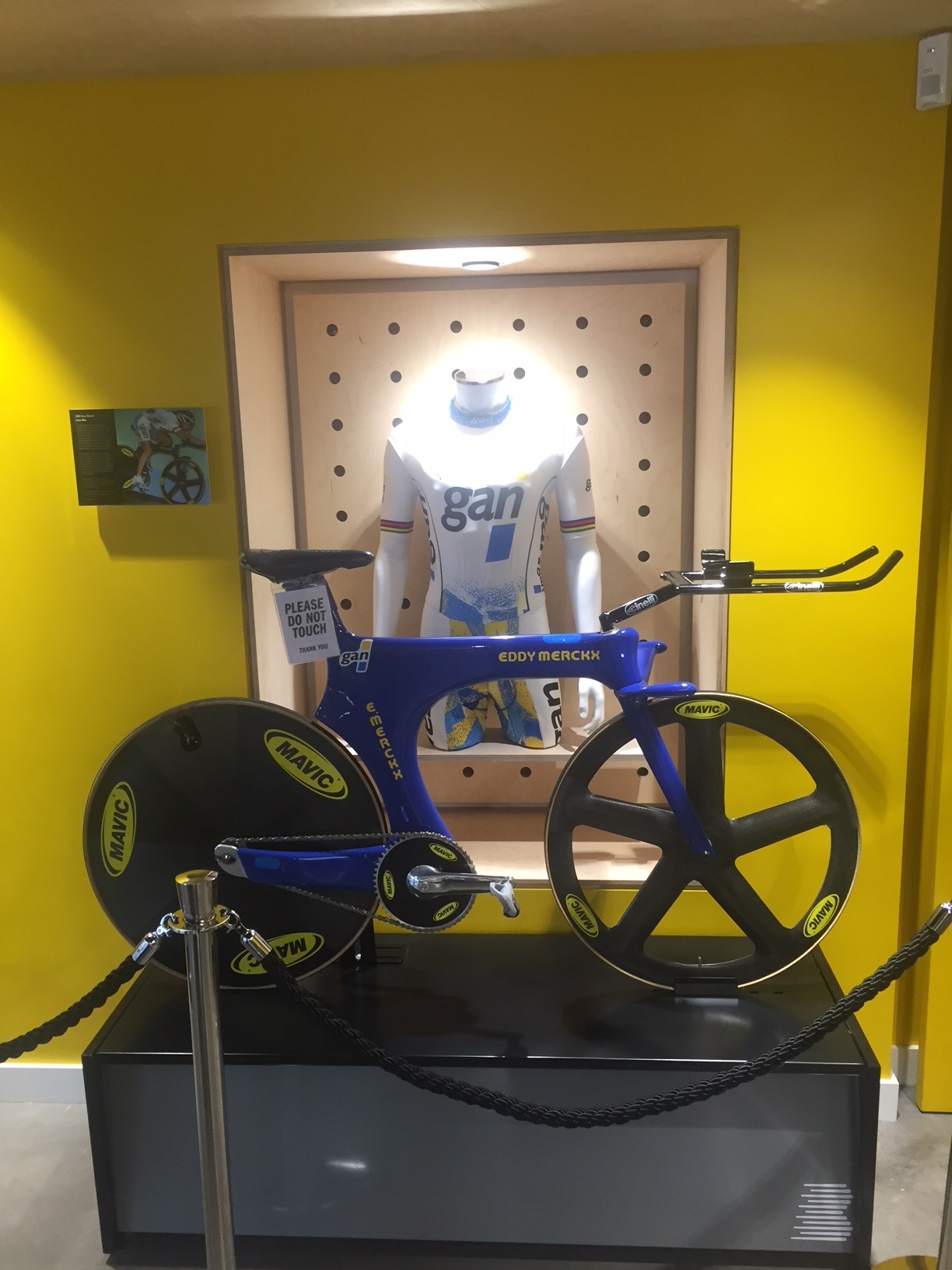 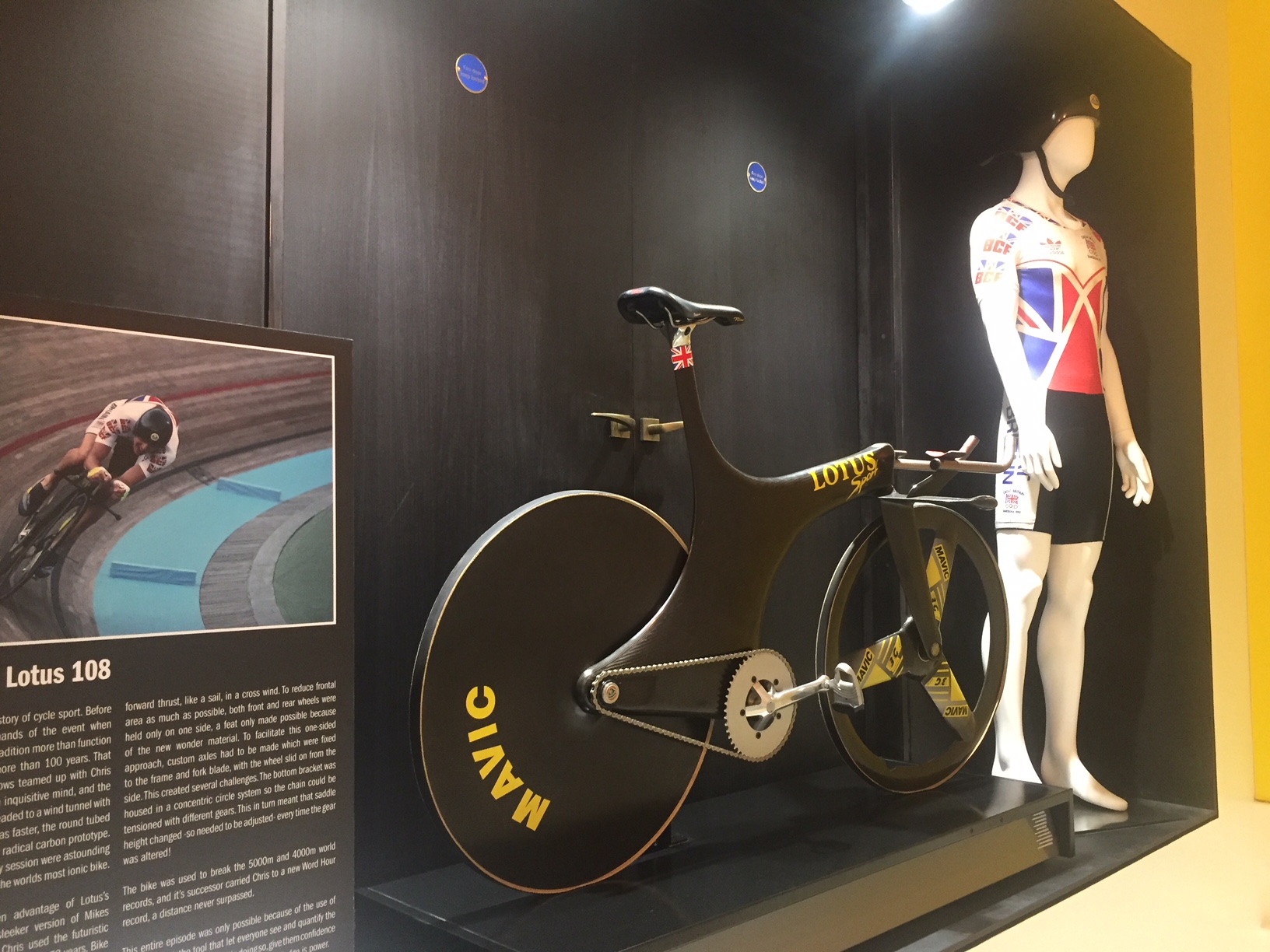 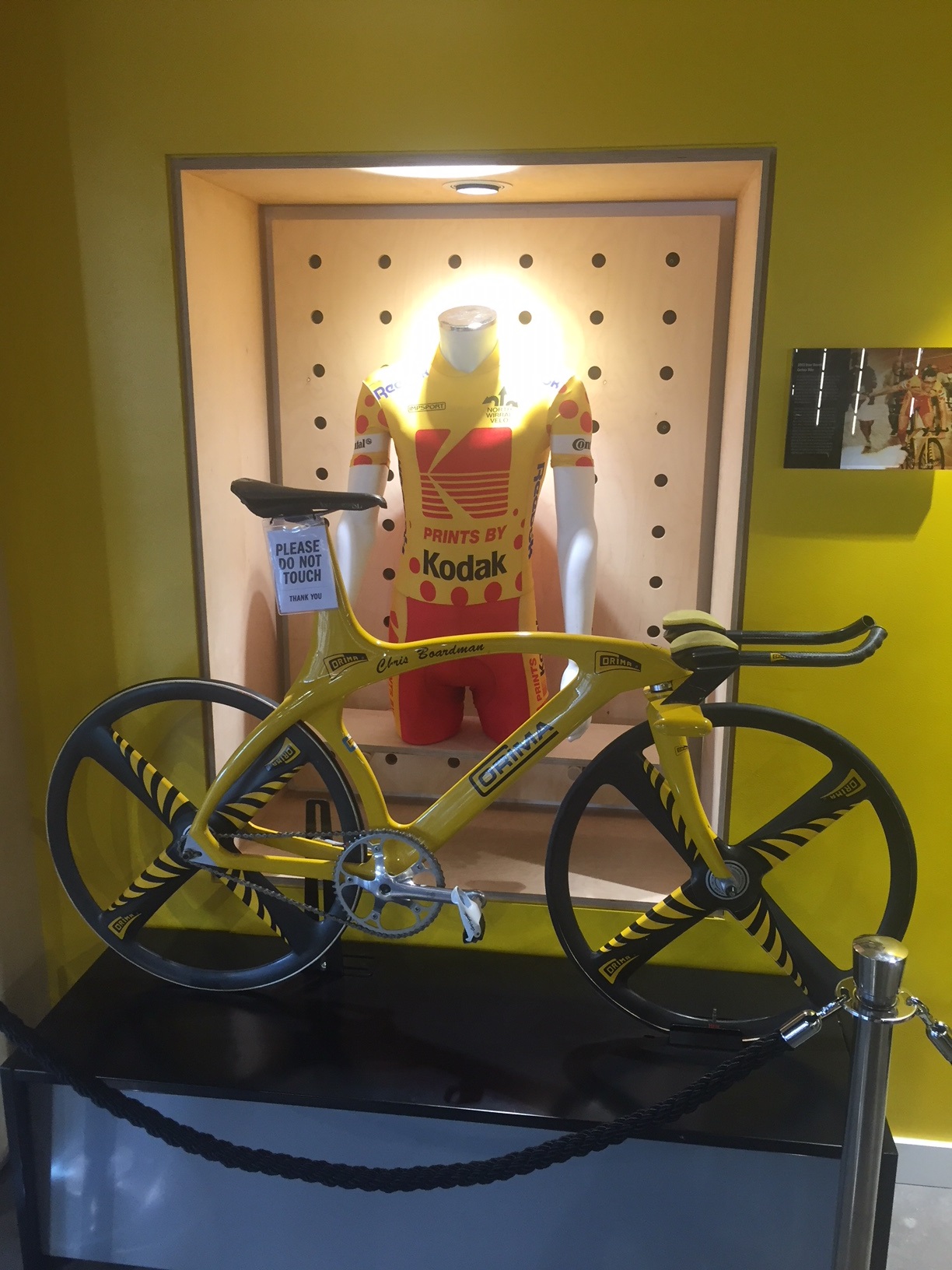
Thanks for reading!
Nic
|